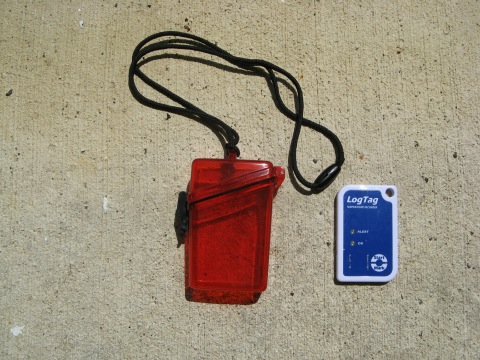Passive Solar Building
I’ve long been interested in “alternative” building and one of the primary requirements when I started looking for property in Floyd County was a southern slope to take advantage of passive solar heating. I talked to one Realtor who told me that everyone was looking for a parcel with a southern exposure and didn’t give me much hope of finding such a parcel. I found the parcel I bought on my own, by using U.S. Coast and Geodetic survey maps for elevations and orientation. Unfortunately, it turned out that the parcel I bought was listed by the very same Realtor who told me that everyone was looking for southern exposure. He had not told me about the parcel, either – so much for earning his commission! Fortunately, I was working with another Realtor, so the commission was split – the first Realtor didn’t get the entire commission.
I had read several books on passive solar construction before finding my parcel and learned that one of the first pieces of information you need when designing a passive solar heated house is to know the heating and cooling degree days of the site so that the amount of square feet of glass and the cubic foot size of the heat retention area can be calculated. There are a number of web sites out there that offer guides to the numbers for various parts of the country, but Floyd County, because it is not very close to a weather monitoring station, does not have very accurate numbers. Also, because Floyd County is in the Blue Ridge Mountains, the terrain is quite rugged in areas and a home that is quite comfortable on a winter day can be a mile away from another house that is miserably frigid. A lot of this has to do with elevation and orientation – many people (foolishly, in my opinion) build their homes on top of a knoll for the view, forgetting that in the winter, winds can be up to 80 m.p.h. in many parts of Floyd County. My house will be built down the slope from the top and will probably be at least partially earth-sheltered. In short, weather is highly variable in Floyd County. I needed a way to gather the data for my micro climate.
So off I went, searching for a device that could record temperatures on an hourly basis so that I could construct my own data for the heating and cooling degree days for my site. I found the device at this site – it is made by MicroDAQ and is used in the cold food storage industry to monitor food temperatures for spoilage.
The data logger is about the size of a credit card. I bought some waterproof plastic boxes that are used by SCUBA divers to protect items and I was in business. I placed a data logger at four different locations on the property and programmed the cards to take a reading every hour of every day for 6 months. I started collecting data in May, 2008 and came back in October to download the data and re-start the devices. I collected the loggers on this last visit and now have a considerable amount of data to convert into heating and cooling degree day figures.

Here is what the raw data looks like for January 16, 2009, a memorable day, I’m sure, in the minds of many Floydians:
1894 1/16/2009 6:00:00 PM 13.7
1895 1/16/2009 7:00:00 PM 10.4
1896 1/16/2009 8:00:00 PM 8.8
1897 1/16/2009 9:00:00 PM 7.3
1898 1/16/2009 10:00:00 PM 6.3
1899 1/16/2009 11:00:00 PM 4.2
1900 1/16/2009 12:00:00 AM 3.3
1901 1/16/2009 1:00:00 AM 3.3
1902 1/16/2009 2:00:00 AM 1.0
1903 1/16/2009 3:00:00 AM -1.0
1904 1/16/2009 4:00:00 AM -2.1
1905 1/16/2009 5:00:00 AM -3.4
1906 1/16/2009 6:00:00 AM -4.2
1907 1/16/2009 7:00:00 AM -4.4
1908 1/16/2009 8:00:00 AM -4.4
1909 1/16/2009 9:00:00 AM -3.9
1910 1/16/2009 10:00:00 AM 5.4
1911 1/16/2009 11:00:00 AM 13.7
Calculating degree days is really quite simple. First, you establish a temperature that you define as comfortable – a benchmark. Usually, the temperature selected is 65 degrees Fahrenheit. Then, you subtract the temperature recorded from 65 and divide that result by 24, the number of hourly readings taken during the day. Adding up the resulting figures gives you the heating degree days for that day. Adding up the results for 5 months of results gives you the heating degree days for the heating season. Tedious? Yes. But I think it will be well-worth it in terms of winter comfort and money spent for heating fuel or electricity.
This small portion of the data yields 43.65 heating degree days and is not even a full 24 hour period. I have a lot of work ahead of me and if I had known better how to use the software before deploying the devices, I probably could have imported the data into an Excel spreadsheet and had Excel do the calculations for me. But I don’t know how to use Excel very well, either, so I’ll just plod along. There is no particular hurry – the logging on the site won’t start until around the first of October.

Hi Jeff,
I saw your post above and wanted to make one comment. The Logger you’re using is an indoor logger and as a result needs to be protected from the elements when being used outdoors. The case you’re using is sealed and as a result creates a thermal barrier to the sensor.
If you’re deploying these in direct sunlight the readings will be WAY off as the temperature that’s being recorded is the temperature of the air inside the case.
Other types of loggers with solar radiation shields are recommended to accurately record the temperature when exposed to direct sunlight.
Thanks for the shout out to our site and feel free to contact me if you have any questions.
Rich Woodfin
Sales Manager
MicroDAQ.com